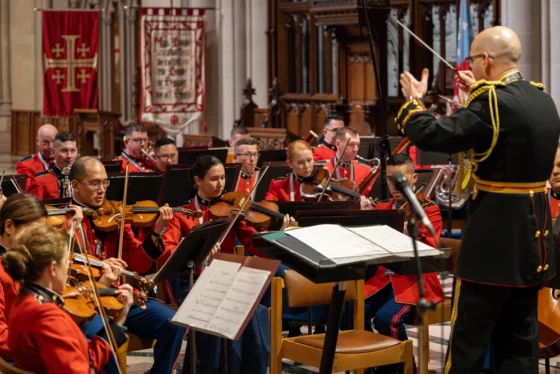Cool Jobs: The National Zoo Lion Trainer
Kristen Clark is an animal keeper at the National Zoo, one of two who trains the lions — including the adult male, two lionesses and seven cubs. Federal News...
By Jolie Lee
Federal News Radio
When the National Zoo’s two lionesses gave birth last year, Kristen Clark suddenly had seven more charges.
Clark is an animal keeper in the Great Cats and Bears unit.
“I really have to pinch myself and just step back and think, ‘I’m doing this job.’ It’s a federal job and it’s probably one of the coolest ones out there,” said Clark, who is one of two keepers training the lions.
Clark is responsible for feeding the giant felines, keeping their living quarters clean and, most importantly, training them.
There are no circus ring tricks. The commands are meant to allow keepers to check the lions without getting into a cage with them. Both the adult and young lions learn to open their mouths on command (to check teeth), lie still against a fence (to receive shots), and stand on their hind legs (to have their underbellies checked). A whistle lets the lions know when their task is completed. The reward – a meatball.
Clark said the training replaces the traditional way of checking animals with a tranquilizer.
Federal News Radio goes behind-the-scenes during a training session. (Story continues below video.)
The lions learn through positive reinforcement, according to Clark. If one doesn’t feel like cooperating on a particular day, she moves on to another lion.
“I can’t make him do anything and he knows it,” she said during a recent training session with the cubs’ father, Luke. “That’s where the relationship of trust and training comes in.”
Clark studied environmental management and biology at the University of Maryland. She did some wildlife rehabilitation before becoming a volunteer keeper aid at the National Zoo. After four years, she was hired in 2005 as a full-time keeper.
The work is humbling because the animals she trains are “so incredible in every way — just size, strength and they’re really intelligent, so you feel like you’re actually making a connection with this animal,” Clark said.
The cubs now weigh a couple hundred pounds. The males are growing crests on the backs of their necks — the equivalent of a teenager’s stubble before a full-on beard grows out. Within the next year, the cubs will be fully trained and then move to other zoos to form their own prides. The lions are part of the Species Survival Plan, which helps diversify the gene pool of the captive lion population.
Clark said she’ll miss the lions when they’re gone.
“I would love to be very scientific and straightforward and say, ‘It’s part of the process,’ but we watched these cubs being born … To be able to work with an animal from the minute it drops on the ground to when it leaves, there’s a lot of deep stuff going on,” she said.
But Clark’s work won’t slow down after the cubs leave. “Then we start the breeding process again,” she said.
(Read more from our Cool Jobs in Government series.)
RELATED LINKS:
View the lions on the National Zoo’s web cam (registration required)
More lion photos from the National Zoo
Copyright © 2025 Federal News Network. All rights reserved. This website is not intended for users located within the European Economic Area.






